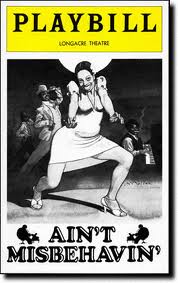
From Broadway To 52nd Street
Ain’t Misbehavin’ opened at the Longacre Theatre on May 8, 1978 and ran for 1604 performances, establishing it as one of the blockbuster musicals of Broadway. Thomas “Fats” Waller who left an indelible imprint on the music by the time of his death at age 41 composed the music that included jazz favorites “Ain’t Misbehavin”, “Honeysuckle Rose” and “I’m Gonna Sit Right Down And Right Myself A Letter”. Richard Maltby directed Nell Carter, Andre Deshields, Armelia Mcqueen and Ken Page.
The Story: Began performance at the Manhattan Theatre Club, this musical retrospective of the life of Fats Waller, master of the stride piano, comedian, last of the great Black minstrel showmen, uses his songs written with various lyrics. In spirit, Ain’t Misbehavin’ evokes the late days of Prohibition when “vipers” smoked “reefers” and bootleg booze could be the worst or the best depending on the source of supply. Title song first sung in the 1929 revue “Hot Chocolates”. The musical won a Grammy in 1978 for Best Cast Show Album.
Broadway History: By the Seventies Broadway is a disheveled cornucopia of porn shows, strip clubs, drug dealers, pimps, prostitutes, runaways, hustlers and street people. The American Musical was not dissuaded by this environment as it morphed into a cultural consciousness during the Seventies to become an instrument of social commentary bringing plays with mixed casts like Hair, Jesus Christ Superstar, Godspell, Two Gentlemen From Verona and the longest running play on the avenue A Chorus Line. Though the country was still reeling from Vietnam, plays like Company gave audiences an opportunity to view middle-class morality and their problems. Black audiences got to see shows like Bubbling Brown Sugar, Timbuktu, Eubie and Purlie opening up the stage for more Black actors and musicals to shine on the Great White Way.
Sponsored By
www.whatissuitetabu.com
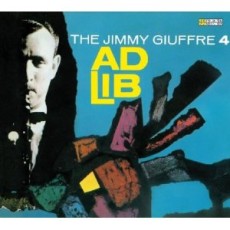
Daily Dose Of Jazz…
James Peter Giuffre was born on April 26, 1921 in Dallas, Texas. A graduate of Dallas Technical High School and North Texas Teachers College, he first became known as an arranger for Woody Herman. He would become a central figure in West Coast jazz and cool jazz, and was a member of Shorty Roger’s groups before going solo. Giuffre played clarinet, as well as tenor and baritone saxophones, but eventually focused on clarinet.
His first trio in 1957 consisted of Giuffre, guitarist Jim Hall and double bassist Ralph Pena, later replace by Jim Atlas. With minor hit with Giuffre’s “The Train and the River” featured on a television special The Sound of Jazz, he was matched with Pee Wee Russell for a leisurely jam session. When Atlas left the trio, Jimmy replaced him with valve trombonist Bob Brookmeyer. By 1961, Giuffre formed a new trio with Paul Bley and Steve Swallow and exploring free jazz hushed and quiet focus more resembling chamber music. The trio’s early ‘60s explorations of melody, harmony and rhythm are still as striking and radical as any in jazz.
Throughout the ‘60s Giuffre, Bley and Swallow eventually explored wholly improvised music, several years ahead of the free improvisation boom in Europe. By the early 1970s, Giuffre formed a new trio and utilized different instrumentation configurations as he ventured into electric and synthesizers. During this decade he headed the jazz ensemble at New York University, taught private lessons in saxophone and music composition. This continued through the ‘90s at the New England Conservatory of Music.
Jimmy Giuffre, who continually wrote creative and unusual arrangements and who was most notable for his development of forms of jazz which allowed for free interplay between the musicians, anticipating forms of free improvisation, passed away in Pittsfield, Massachusetts on April 24, 2008 of pneumonia, just two days shy of his 87th birthday.
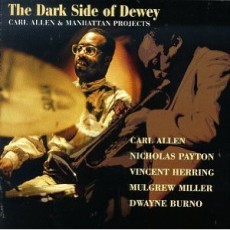
Daily Dose Of Jazz…
Carl Allen was born on April 25, 1961 in Milwaukee, Wisconsin and grew up on gospel, R&B, and funk, but later turned to jazz after hearing a record by saxophonist Benny Carter. While in high school he studied drums with Roy Sneider and his band director Robert Siemele.
His first hometown gigs were with Sonny Stitt and James Moody prior to attending the University of Wisconsin at Green Bay for two years, then graduating from William Patterson College. Allen joined trumpeter Freddie Hubbard a year before his graduation, serving as his Musical Director for eight years, and recorded several recordings.
With over 150 sessions to his credit Carl has worked with a wide variety of musicians including Jackie McLean, George Coleman, Christian McBride, Benny Green, Michael Brecker, Sammy Davis Jr., Jennifer Holiday, J. J. Johnson, Branford Marsalis, Donald Harrison, Kenny Garrett, Lena Horne, Ruth Brown, Wayne Shorter, Herbie Hancock, Bobby Hutcherson, Terence Blanchard, Phil Woods, Benny Green, Cyrus Chestnut, Joe Henderson, Billy Childs, Rodney Whitaker and many others.
Carl Allen, drummer, sideman, bandleader, entrepreneur, producer and educator has a profound and propulsive percolation that provides soulful and syncopated support. One of the jazz world’s in-demand drummers, he currently serves on the faculty of The Julliard School as Artisan Directum of Jazz Studies.
More Posts: drums
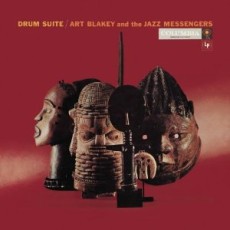
Daily Dose Of Jazz…
Jimmy “Spanky” DeBrest was born on April 24, 1937 in Philadelphia, Pennsylvania. He took up the bass and during his early years in Philadelphia he played with Lee Morgan’s earliest band while the virtuoso trumpeter was still a teenager. In 1957 he was a member of Ray Draper’s Quintet, Jackie McLean, pianist Mal Waldron and drummer Ben Dixon.
Spanky’s most famous affiliation was with master drummer Art Blakey until 1958 on a series of recordings that includes a spellbinding collaboration with pianist and composer Thelonious Monk. His performance credits include work with John Coltrane, Clifford Jordan and J. J. Johnson. He continually recorded until 1971.
Bassist Spanky DeBrest passed away on March 2, 1973 leaving the world his legacy of seventeen recording sessions as a sideman predominately with Art Blakey and the Jazz Messengers.
More Posts: bass
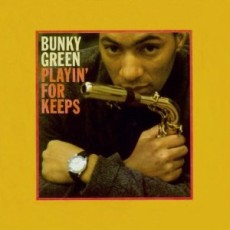
Daily Dose Of Jazz…
Vernice “Bunky” Green was born on April 23, 1935 in Milwaukee, Wisconsin. Originally strongly influenced by Charlie Parker, it was Charles Mingus’ sparing use of notation and his belief that there was no such thing as a wrong note that made a deep impression and had a lasting influence on Green’s own style.
Green began playing the alto saxophone around Milwaukee, mainly at a local club called “The Brass Rail.” His first big break came when he was hired in New York City by Charles Mingus to replace Jackie McLean in the 1960s. This was followed by a move to Chicago, Illinois that gave him the opportunity to perform with Sonny Stitt, Louie Bellson, Andrew Hill, Yusef Lateef and Ira Sullivan.
Gradually withdrawing from the public eye to develop a career as a leading jazz educator, Bunky taught at Chicago State University from 1972-1989 and in the 1990s took up the directorship of the Jazz Studies Program at the University of North Florida in Jacksonville. He also served a term as the president of the IAJE/International Association for Jazz Education and has been elected to the Jazz Education Hall of Fame.
Green recorded several fine albums beginning in the 1960s working with Wynton Kelly, Jimmy Cobb, Elvin Jones, Jason Moran and Lonnie Plaxico; was leader of the Vanguard label in the 70s, and awarded the coveted 5 Star Review from Down Beat Magazine for his 1989 commemoration of his parents death with “Healing The Pain”. Bunky Green continues to record and pursue his educator endeavors. He is currently Professor Emeritus and Director of Jazz Studies Emeritus at the University of North Florida.



